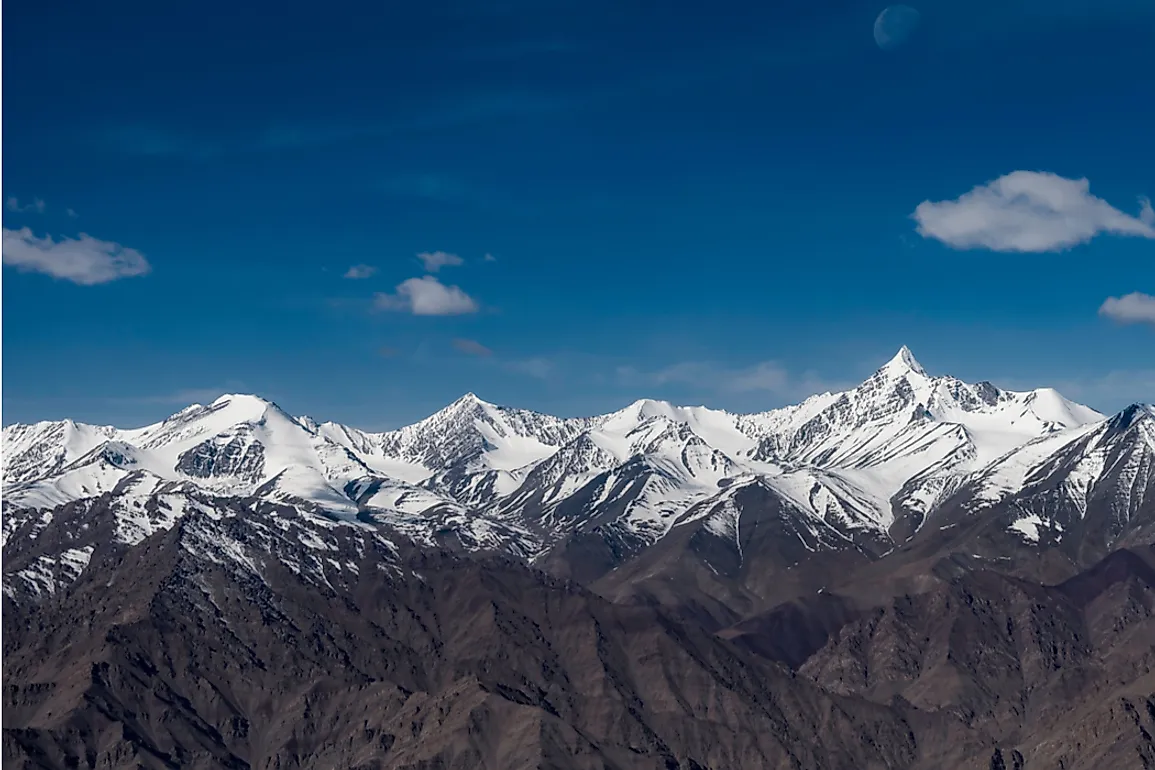What Is The Snow Line?

The general definition of the term “snow line” is the boundary which separates areas which are covered with snow and areas that are not. However, the term can have different definitions depending on the context in which it is used and, therefore, there exist different types of snow lines. Some of the types of snow line include the permanent snow line (used to describe the line beyond which snow is found throughout the year), the annual snow line (used to define the boundary found in glaciers separates the ablation zone from the accumulation zone), and the regional snow line (used to define the boundary over large areas).
Latitude and Altitude
Latitude is one factor which dictates the position of the snow line in different parts of the globe. On the equator, the snow line is usually found at an altitude of 15,000 feet above sea level. The position of the snow line varies as one moves away from the equator and reaches as high as 18,700 feet above sea level in the Himalayas which lie near the Tropic of Cancer. The snow line is non-existent in the Andes Mountains which lie on the Tropic of Capricorn, something which is attributed to the aridity of the area. The effect of latitude eclipses that of altitude in the position of the snow line in the earth’s Polar Regions. In the Polar Regions, the snow line is found at the sea level which is evident in the presence of ice caps.
Other Factors Impacting the Snow Line’s Location
Another factor which affects the position of the snow line is the distance of a region from the coast. Regions which lie near the coast usually receive more snowfall than areas situated further inland. As a result, the snow line of coastal regions is usually lower than that of regions found away from the coast. Ocean currents also affect the altitude at which the snow line is found. Large ocean currents have a warming effect on the surrounding land which drives the snow line to high altitudes. The face of a slope also affects the position of the snow line with north-facing slopes in the northern hemisphere receiving less solar exposure and, therefore, has a lower snow line than southern-facing slopes.
Measurement
Measuring the snow line does not require to be done on-site, with modern technology making it possible to be done remotely. The snow line is measured through in different ways including the use of satellite images, aerial photography, and automatic cameras. These high-tech measurement methods have high accuracy levels and make it possible to make revisions of the snow line to be in line with the prevailing changes in climate.
Effects of Global Warming on the Snow Line
The snow line is not fixed and responds to changes in global temperatures. The ongoing climatic change has affected the position of the snow line in all parts of the world. Some mountains have their snow disappearing in the past few decades, which is attributed to increasing global temperatures caused by human activity. Scientists believe that the current snow line is much higher than it was thousands of years ago. According to numerous studies, the snow line was between 2,000 feet and 4,000 feet lower in the last glacial period than it is presently.











